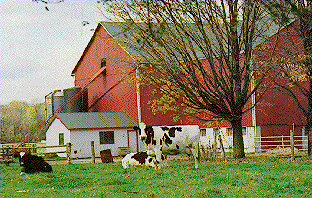
- You may wonder what breeding strategy actually means. You just learned that in order to have enough milk year round, a dairy farmer must keep the cows on schedules so that there will always be enough cows that are having calves and are milking. Ideally, a cow will milk for 305 days and have a 60 day dry period during which she rests. Then, before she has her next calf, she starts milking again. Under these perfect conditions, the cow has a calf every year. This would be best for the dairy farmer because it is most productive.
However, in reality, the cow may have a calf every 13 or 14 months, causing them to have a longer dry period. For us, this means that the cow is not producing as much milk as she could. The longer dry period may occur because the cows have a hard time breeding. There are a number of reasons why a cow may not get pregnant or give birth to a calf. For example, during very hot summers, embryos have a hard time staying alive in the womb because of the extreme body heat of the mother cow. There are many other reasons why a dairy cow does not stay on the ideal breeding schedule. For these reasons, sometimes instead of using a bull to breed their dairy cows, dairy farmers will use artificial insemination.

